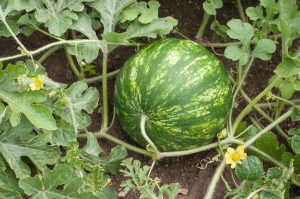 Fusarium wilt has been a problem in watermelon for several years. A new race of the disease makes it even more of a struggle to deal with. Nicholas Dufault, assistant professor and Extension specialist in the Plant Pathology Department at the University of Florida (UF), says race three fusarium wilt was recently found in the United States.
Fusarium wilt has been a problem in watermelon for several years. A new race of the disease makes it even more of a struggle to deal with. Nicholas Dufault, assistant professor and Extension specialist in the Plant Pathology Department at the University of Florida (UF), says race three fusarium wilt was recently found in the United States.
According to Dufault, researchers did not know much about race three until about five to 10 years ago, which is when UF researchers started paying attention to it as well. “We started testing soils,” he says.
Compared to race one and two of fusarium wilt, the biggest difference with race three is the aggressiveness of the disease. The pathogen itself is not very different, and the wilting symptoms look the same.
When the plant is younger, and the vines start to grow, one side of the plant will die. Then, within the next couple days, the entire plant could die. This pathogen is deadly because it blocks the vascular tissue that moves water and nutrients to the plant. With race three, Dufault says growers may see their watermelon die faster, or there may be a larger area affected by the pathogen. Race three can be aggressive in the seedlings as well.
The biggest issue is that there is not a variety that is resistant to this race of fusarium wilt. “It wasn’t a focus for most breeding programs before,” Dufault explains.
Since there are not any resistant varieties available yet, Dufault is looking at alternative strategies to manage race three. Later planting dates may be a viable management tool. Clemson researchers found that later planting dates reduced instances of fusarium wilt, and the same has been seen in Florida for the past two years.
During his initial late-planting trials, Dufault planted a month later than usual (around the end of February or early March). However, he saw the most reduction in fusarium wilt when he planted in late March or early April. “Although we haven’t done perfect research on this yet, what we’re correlating it (the reduction of fusarium wilt) to right now is the soil temperatures start to heat up, and this pathogen develops more quickly in cooler temperatures rather than warmer temperatures,” he explains.
Another management tool Dufault is looking at is grafting. Right now, he is primarily looking at a squash rootstock. “In the initial trials in the greenhouse and in the field, we have seen what I would call an immunity to the fusarium wilt pathogen,” he says. The most difficult aspect of the grafting trials will be deciding which rootstock to use. The goal is to find a rootstock that is resistant to race three but will still produce quality fruit. These trials are still in the early stages.
Until a reliable management tool is released, Dufault recommends growers stick to older practices, like crop rotation.
Share this Post









